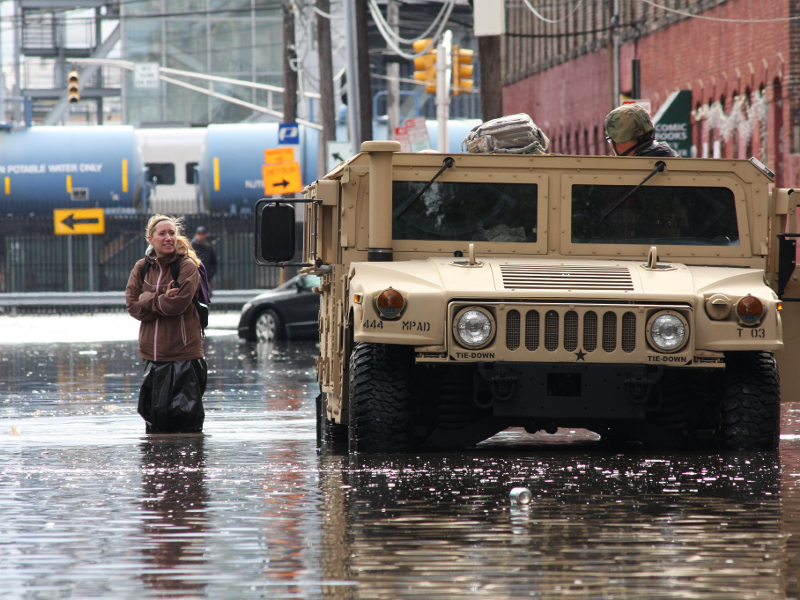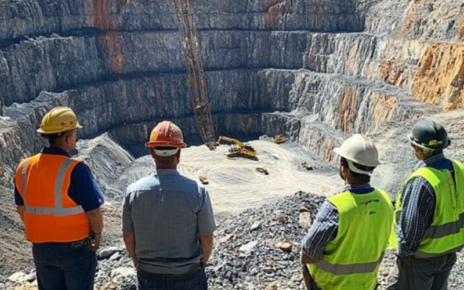With every passing day, the existential threat of climate change grows. Natural disasters are occurring at higher rates and alarming intensity, destroying homes, infrastructure, and lives. Many NATO members have endured the growth of natural disaster strength against their citizens. In Canada, the forest fire season is becoming more destructive every year, as in 2023, Canadian wildfires burned 6 times the area of the historical average. In the United States, hurricane season has increased in severity, with scientists saying that climate change caused this month’s Hurricane Milton to be 30% more severe than its projected level of strength in a climate that was not heating up.
As NATO has become more aware of the dangers that climate change poses to our lives, there have been developing efforts by the alliance to foster a focus on climate change protections. The first was in 1969, with the Committee on the Challenges of Modern Society, which involved studies on emerging environmental challenges of the time such as hazardous waste disposal. This committee merged with NATO’s Science Committee in 2006 to combine efforts on tackling environmental security initiatives. Climate change was then officially first recognized as a threat to security in NATO’s 2022 Strategic Concept, where NATO committed to becoming a leading organization in dealing with the climate crisis.
Within the past year, NATO went further by taking a major leap in the sphere of climate security, with the official opening of the The NATO Climate Change and Security Centre of Excellence, hosted by the Government of Canada through Global Affairs Canada and the Department of National Defence. The purpose of the platform is for both state actors and civilians to study and expand our base of existing knowledge on how to best address climate change security concerns. After opening their doors in Montreal in May 2023, the centre is expected to be fully operational by the end of 2024.
It is clear that Canada is the NATO member state taking the lead on NATO’s climate change security efforts, especially through their own national defense policies. On the 8th of April 2024, Canadian Prime Minister Justin Trudeau and Defence Minister Bill Blair announced the establishment of a new federal defense policy. This was acknowledged as a renewed version of the 2017 Strong, Secure, Engaged Defence Policy, with updated focuses reflecting the global security shift that has taken place since then. The policy is known as the Our North, Strong, and Free Defence Strategy, which highlights the government’s new focus of securing the Canadian Arctic from the variety of dangers that climate change brings to the region.
As Canada’s Arctic deals with rapid temperature increases at a rate 4 times the global average, it deals with an increasingly dangerous challenge. The region becomes more easily accessible for other states to take advantage of in terms of natural resource extraction and foreign military intentions. There have been reports of Russian military activity in Arctic airspace, as well as Chinese vessels collecting data about the Canadian North as they aim to strengthen their Arctic presence. With such threats to Canadian security, the policy emphasizes the need for Canada to secure their sovereignty and invest the appropriate military strategies to do so.
In addition, Canada also currently strives to follow their Defence Climate and Sustainability Strategy 2023-2027. This plan includes a thorough breakdown of the security risks that climate change has the potential to bring to Canada and the world, as well as how the federal government plans to address these risks. For one, they highlight how climate change increases the spread of infectious diseases to Canadians, having worse economic and health impacts on people in vulnerable communities, regions, and minority groups. It is highlighted that Canada’s actions are in line with commitments made in NATO’s Climate Change and Security Action Plan. Within this framework, there are four major areas of climate change focus for engaged member states: awareness, adaptation, mitigation, and outreach. Alliance members agreed to focus on this plan at the 2021 NATO Brussels Summit.
The Defence Climate and Sustainability Strategy 2023-2027 also elaborates on certain plans of action for the outlined security concerns. For one, there is the goal for the Canadian Armed Forces to incorporate climate change security considerations across all equipment usage and intelligence areas. Canada’s Defence Team has committed to sharing their collected global climate intelligence with their NATO allies. There is also the call for the CAF to have more involvement in situations caused by climate change. The strategy also aims to help reverse the growing dangers of climate change, by striving to reduce greenhouse gas emissions through more sustainable practices, housing, equipment, and vessels for the CAF. The details for the sustainability goals for Canada’s military are addressed in the National Defence and Canadian Armed Forces Climate Resilience and Environmental Sustainability Science and Technology Strategy.
Within each area of focus in NATO’s Climate Change and Security Action Plan, Canada is a leading state in terms of the projects and policies they are implementing. This, along with their hosting of the new NATO Climate Change and Security Centre of Excellence makes them very influential in the organization’s evolving focus on climate security. It is important that they utilize this influence to help other capable NATO states to develop similar climate security policies that will contribute to this focus. For example, states like the United Kingdom, France, and even the United States have not implemented as many policies and projects as their economies, militaries, and individual environments can handle. Canada can encourage states like these to build on their initiatives, as it becomes more and more important that they do so with every day that goes by. Canada must take advantage of their mantel to lead NATO’s efforts for climate change security and mitigation, because if there are any security threats that should be a priority, it’s the ones that pose an existential risk.
Photo: “New Jersey National Guard soldiers assist displaced residents at the town of Hoboken Oct. 31. Four trucks and eight soldiers were dispatched to Hoboken at the request of the state Office of Emergency Management to assist in rescue efforts of approximately 2,000 displaced residents.” (2012), by Spc. Joseph Davis/Released via Flickr and the U.S. Army. License under CC 2.0
Disclaimer: Any views or opinions expressed in articles are solely those of the author and do not necessarily represent the views of the NATO Association of Canada.





